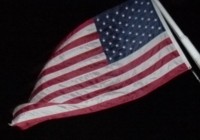Grand Canyon & Tuba City Arizona
The Grand Canyon is one of those places that you can't understand without going there. It's like skydiving. You can't appreciate it until you do it yourself. In this case it's difficult to get that twinge of acrophobia (from the Greek: ἄκρον, ákron, meaning "peak, summit, edge" and φόβος, phóbos, "fear") from a photograph. And it's amazing that in highly litigious America in national parks one's safety is one's own responsibility. So people can and do jump, with no safety line, across gaps to isolated rocks with thousand foot drops. Most of the edge is completely unfenced and when it is it's often a stone wall that people sit up on, back to the drop, to be photographed.
The canyon is huge and is truly one of the wonders of the world. We stayed overnight in a lodge in the park and ate in what was once one of Harvey's iconic establishments - see Santa Fe earlier.
The Grand Canyon - Click on this picture to see more
Tuba City - Navajo Reservation
Our next overnight stop was to be the 'Quality Inn Navajo Nation' in Tuba City in the Navajo Reservation a tribal area of 27,413 sq miles, occupying portions of north-eastern Arizona, south-eastern Utah, and north-western New Mexico. Tourism and native arts are important sectors of the local economy, after mining and agriculture (mainly sheep grazing).
The local trading post was packed with treasures ranging from sand art to weapons like bows and arrows with hand chipped stone points. Difficult to take onto a plane. Immediately adjacent to our hotel was a museum displaying native hand crafts and lifestyle that was also very interesting.
The Nation is largely self-governing, with traditional leadership organised around matrilineal clans or kinship groups. Thus children are considered born into the mother's family and gain their social status from her.
Perhaps this is the reason that alcohol is banned; the nation has resisted the temptation to allow the gambling and casinos, embraced by other tribes; and a display panel headed 'challenges' listed concern about brighter children leaving home and the antisocial behaviour of some young people who come and go. It sounded familiar.
After breakfast we had a dam to visit. A day earlier we'd crossed the Colorado river at the Hoover Dam.
In its day, 1936, the Hoover Dam, with 2.5 million cubic metres of concrete enclosing 35 billion cubic metres of water, was the largest engineering project in the world. It remained so for decades. Last time I was in Las Vegas, 25 years ago, we drove over the top of the Hoover Dam but that's no longer permitted and the road now goes over a bridge nearby. High walls, against the high wind, mean that the dam can't be seen while driving.
In contrast, the Glen Canyon Dam is a destination in its own right, with a Visitor's Center and a tour program. It's also on the Colorado River and is 316 feet longer and almost as high as the Hoover but with only 1.7 million cubic metres of concrete the dam wall is quite a bit lighter (see the comparisons panel in the photo album - click on the picture below).
Glen Canyon Dam was completed in 1963-64 and is a more modern dam than the Hoover. Its strength, over its longer length, is derived from its catenary arch design, like a concrete arch bridge on its side, with the canyon sides acting as abutments. This is great in a canyon where the walls form part of the same deep geological structure and are stable. It's not so great if the strata may move of crack in an earthquake.
Glen Canyon Dam - Click on this picture to see more
The tour was well worth the drive and a short wait. Both dams were built to provide water management and security but much was made of the Hoover Dam's hydroelectric capacity that in 1936 was a phenomenal 2 gigawatts. That was when a lot of people in the region still had fuel stoves and kerosene lamps and it seemed an awful lot. But by the time the Glen Canyon Dam was built a moderate sized coal or nuclear plant could easily surpass this and the cost could no longer be justified on the grounds of electricity generation. Nevertheless the Glen Canyon Dam has a generating capacity of 1.3 gigawatts (about 520 large wind turbines or three times this number when availability factor is compared).
The turbines have recently being upgraded with more modern computer-designed and machined stainless steel turbine runners and wicket gates to provide more energy from less water flow. One of the alternators was also in pieces for maintenance. For those of us who find such things interesting, as everyone who uses electricity should, there are photos of the turbine hall with the alternators and of a replaced runner and wicket gate in the album above.

